The Reykjanes Peninsula is experiencing an increase of seismic activity, the Grindavík area and Fagradalsfjall are off limits to visitors. Stay curious and follow @perlanmuseumiceland for real-time updates.
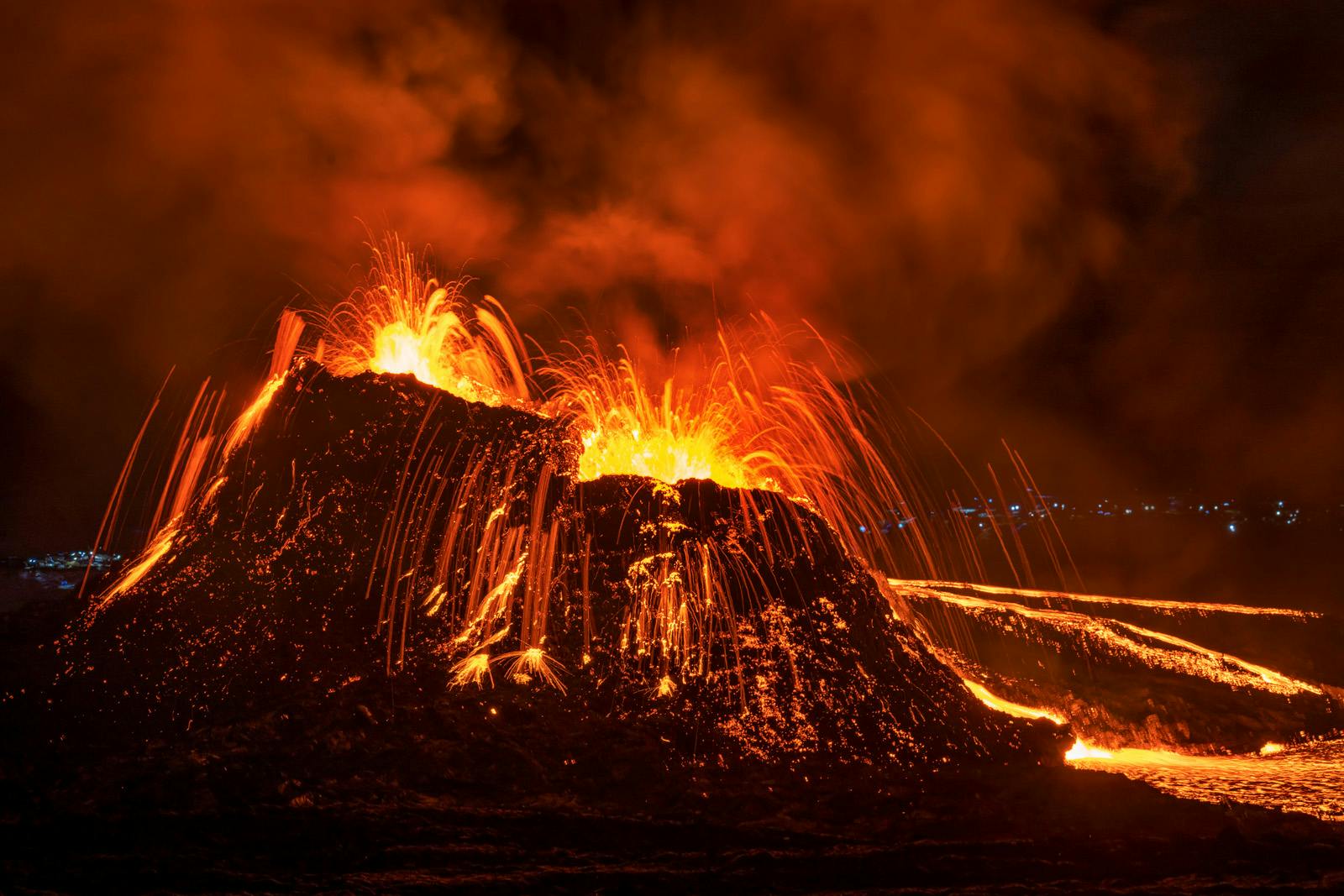
Ultimate Guide to Fagradalsfjall Volcano
When Fagradalsfjall burst into life in March 2021, after being dormant for 6000 years, it instantly captured people's attention. This volcano quickly became one of Iceland's most popular tourist destinations.
Although the eruption has subsided, it is still worth visiting. To help plan your trip, follow our guide to the Fagradalsfjall Volcano in Iceland.
To start with, we recommend practising how to pronounce Fagradalsfjall and Geldingadalir:
- Fagradalsfjall: "fu-gra-dalls-fy-utl"
- Geldingadalir: "gyel-ding-a-dal-ir"
Here are more pronunciations surrounding the Icelandic eruptions. Good luck!
Where is Fagradalsfjall Volcano?
You'll find the Fagradalsfjall Volcano on the Reykjanes peninsula SW-Iceland in an area called Geldingadalir. The closest settlement is Grindavik, on the south coast; fortunately, this volcano is far from large population centres. Even when the Fagradalsfjall eruption was at its peak, there was no danger to the residents of Reykjanes or a negative impact on the capital.
Keflavik International Airport did not need to shut down. In fact, sightseeing flights in light aircraft and helicopters were permitted to fly very close to the volcano even when lava was flowing out of its crater.
These unique vantage points provided an unparalleled view of the eruption, resulting in breathtaking drone footage and stunning photographs captured by those who braved the skies or hiked to witness the spectacle from the ground.
The incredible imagery further boosted the volcano's appeal, solidifying its position as one of Iceland's must-see attractions.
What Type of Volcano is Fagradalsfjall?
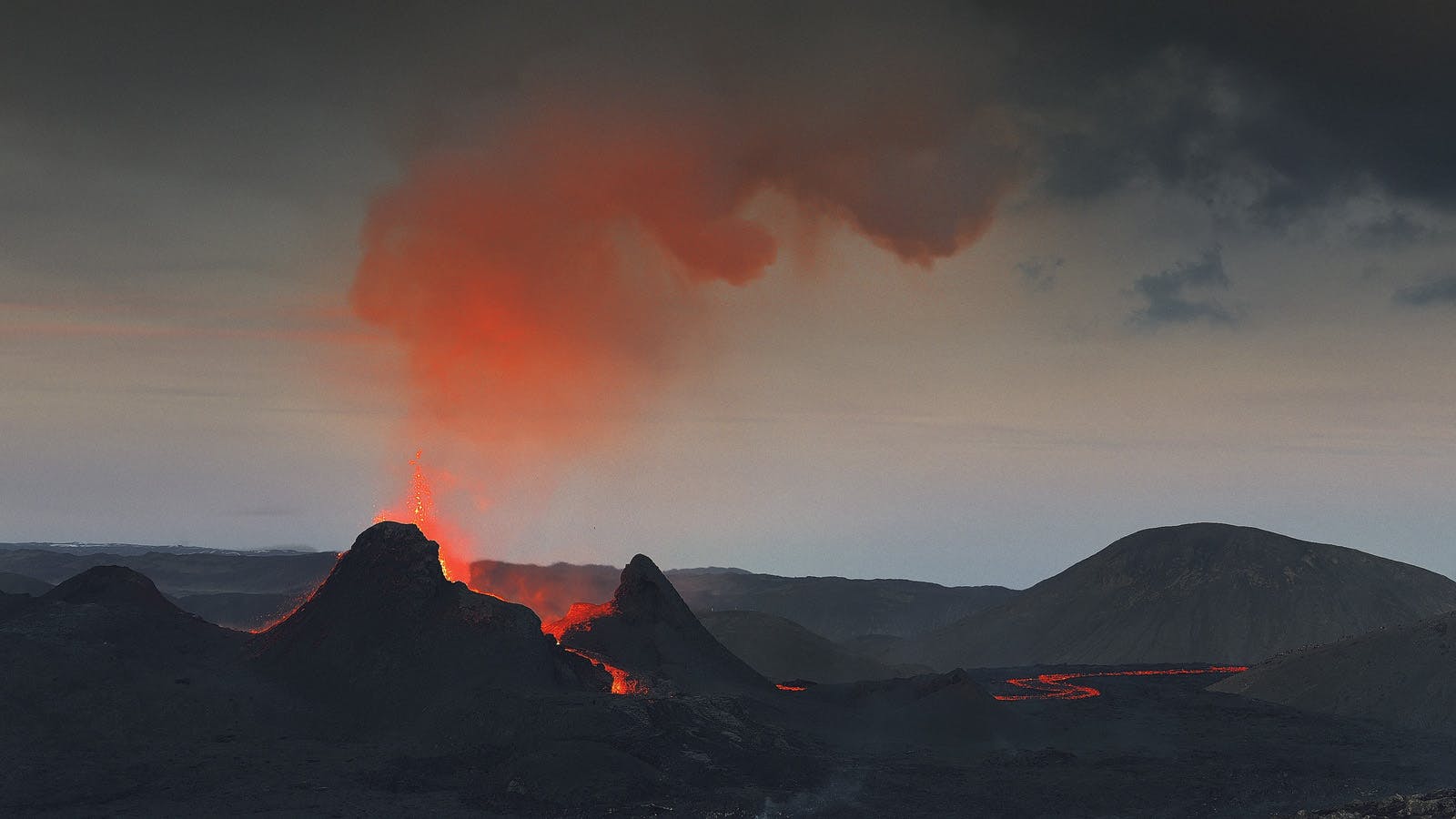
It's true that many volcanoes can be unpredictable and pose significant dangers, destruction and loss of life. These types of volcanoes often have explosive eruptions.
Fortunately, there are different types of volcanoes, and Fagradalsfjall is what's known as a shield volcano. A shield volcano is characterised by its gentle slopes and comparatively less violent eruptions.
Small shield volcanoes like Fagradalsfjall typically produce lava that move at a slower pace because of low production rate, allowing local authorities sufficient time to evacuate people from affected areas and ensuring their safety. In the case of Fagradalsfjall, it was slow-moving basaltic lava. Luckily, it posed little immediate threat to nearby communities.
While the Fagradall eruption has subsided, you can still experience the Geldingadalir Eruptions through Perlan's Volcano Show. Gain a deeper understanding of Iceland's volcanoes and the diverse volcanic landscapes found throughout the country.
When Did Fagradalsfjall Erupt and How?
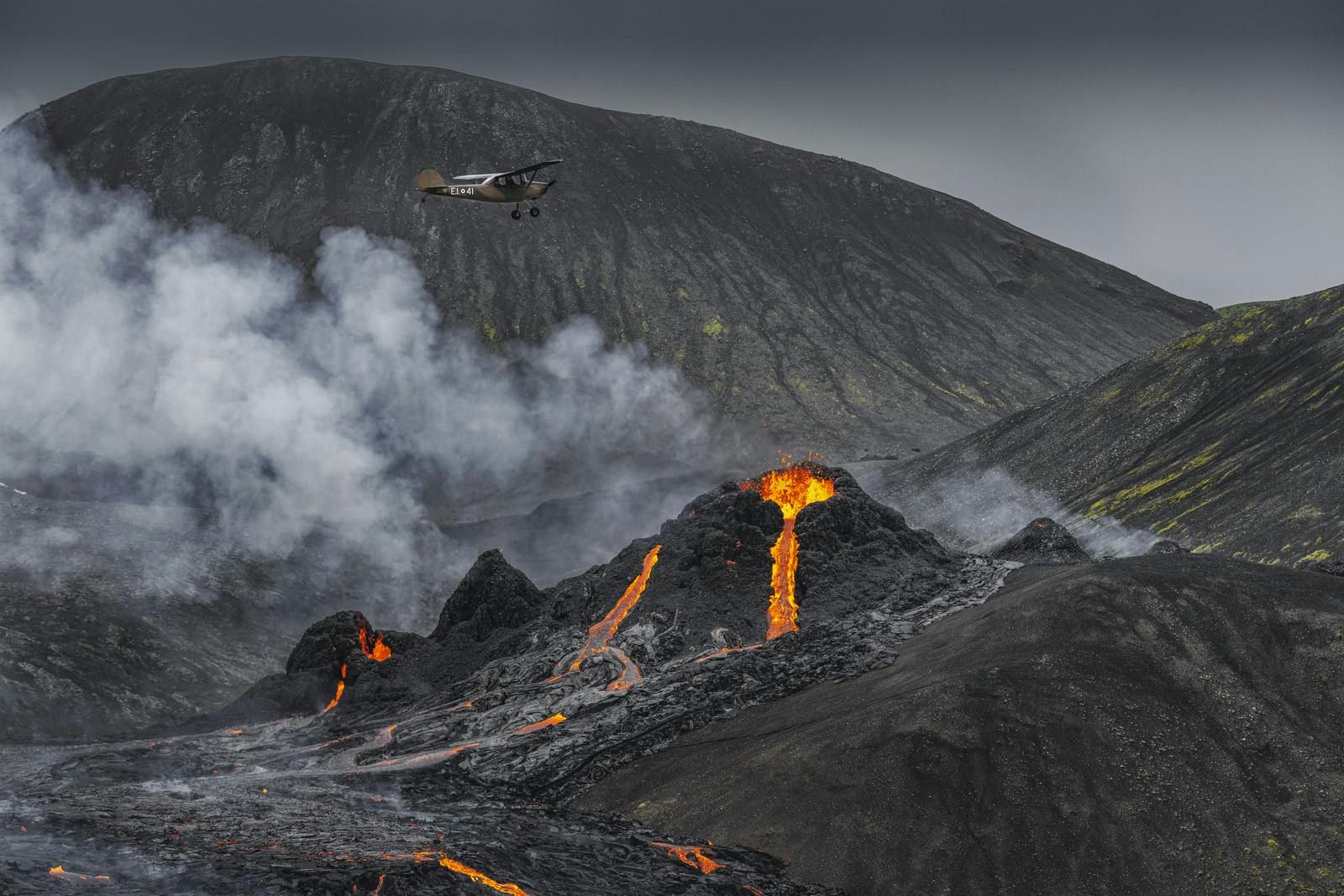
If you're wondering if Fagradalsfjall is still erupting, the answer is no. The better question is, is it still active? And that's a yes.
Volcanoes are considered active if they have the potential to erupt at any moment, which often means that there is a significant amount of magma in the volcano's magma chamber.
Even when lava isn't visibly flowing, as with Fagradalsfjall, it is common to see steam or gases emanating from the crater, secondary cones, or fissures within the lava flows.
The cooled lava on the surface appears blackish-grey, which can be misleading. During the first months after an eruption, the hardened layer may only be a few inches thick, thin enough to break under a person's weight. And beneath this layer is molten rock, which means you don't want to fall through the lava. We're talking about temperatures of up to 1,200°C (2,192°F), with the potential to cause life-changing injuries. Today the Fagradalsfjall lava is solidified but the volcanic activity could start again.
Even if it seems like the eruption is over, and the lava is solid, it's not worth taking a chance. The unpredictable nature of the volcanic activity means that caution should always be exercised when visiting or exploring areas around active volcanoes like Fagradalsfjall.
Hiking on Fagradalsfjall Volcano
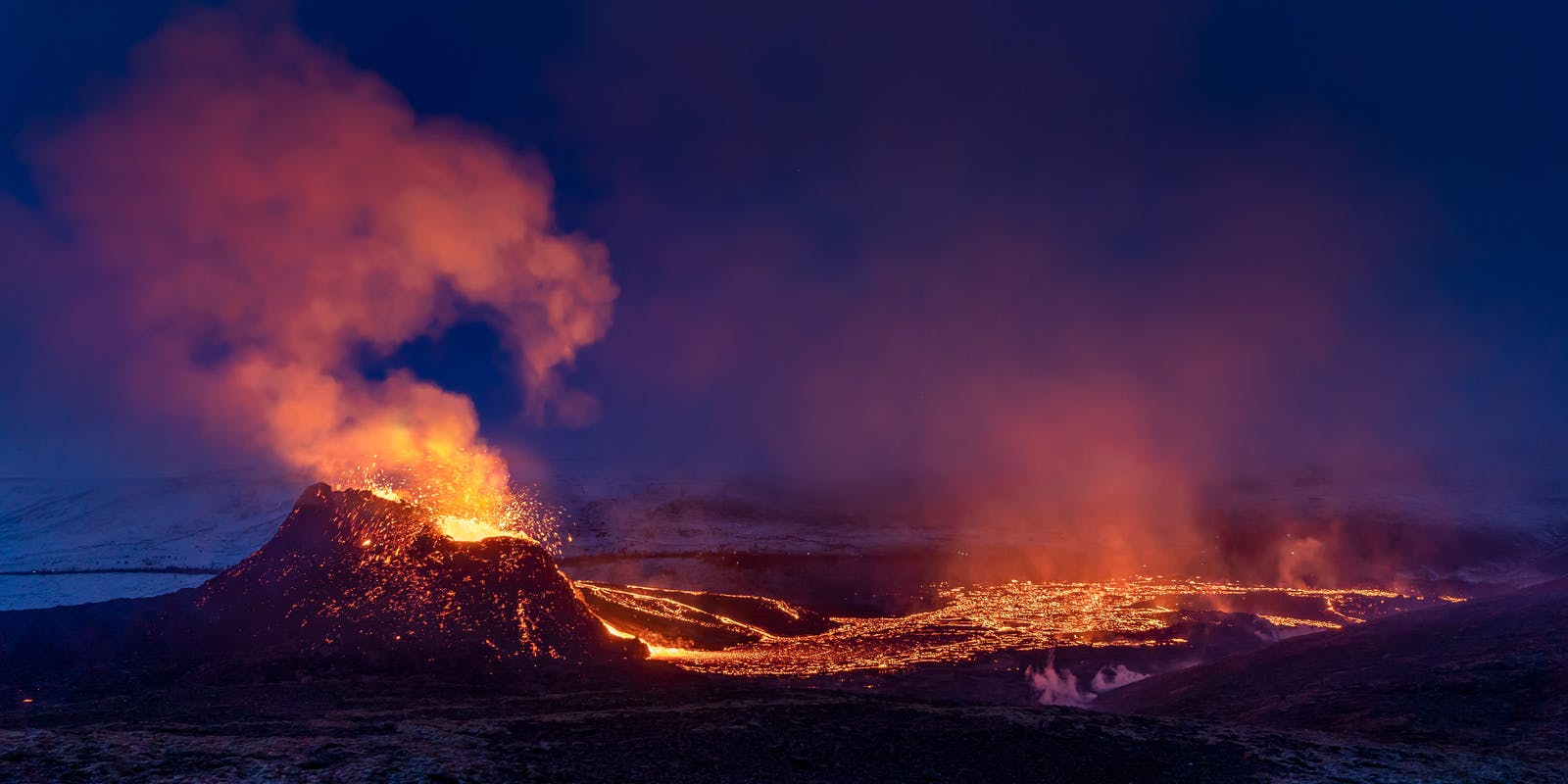
You can still visit Fagradalsfjall volcano, but if you do, you won't see magma being ejected from the crater or rivers of lava flowing down its flanks. This site offers a glimpse of the scarred landscape and numerous volcanic landforms from a relatively close vantage point.
Preparing accordingly is essential if you plan a hike on the Fagradalsfjall volcano. The hike can be lengthy, and with Iceland's unpredictable weather, careful consideration should be given to the timing and the necessary gear.
However, before doing so, you need to figure out which route you will take as you hike onto the site. As the eruption progressed through 2021 and again in 2022, new paths were needed so that hikers could see what was happening from a safe vantage point.
There are three main paths, A, B, and C, with path C having two branches, essentially providing four trail options.
- Path A is the longest route, leading to the summit of the eruption site and offering the closest access to the craters. This trail can be challenging due to its length and uneven, loose ground.
- Path B is even more difficult and has become less popular among hikers as it no longer provides the best views of the volcano.
- Path C, on the other hand, remains a popular choice. This shorter trail, particularly the Nátthagi branch, leads you directly to the cooled lava formations in the shortest time.
When planning your Fagradalsfjall volcano hike, consider the varying difficulty levels of each trail and choose the one that best suits your abilities and preferences.
What to bring if you want to visit Fagradalsfjall
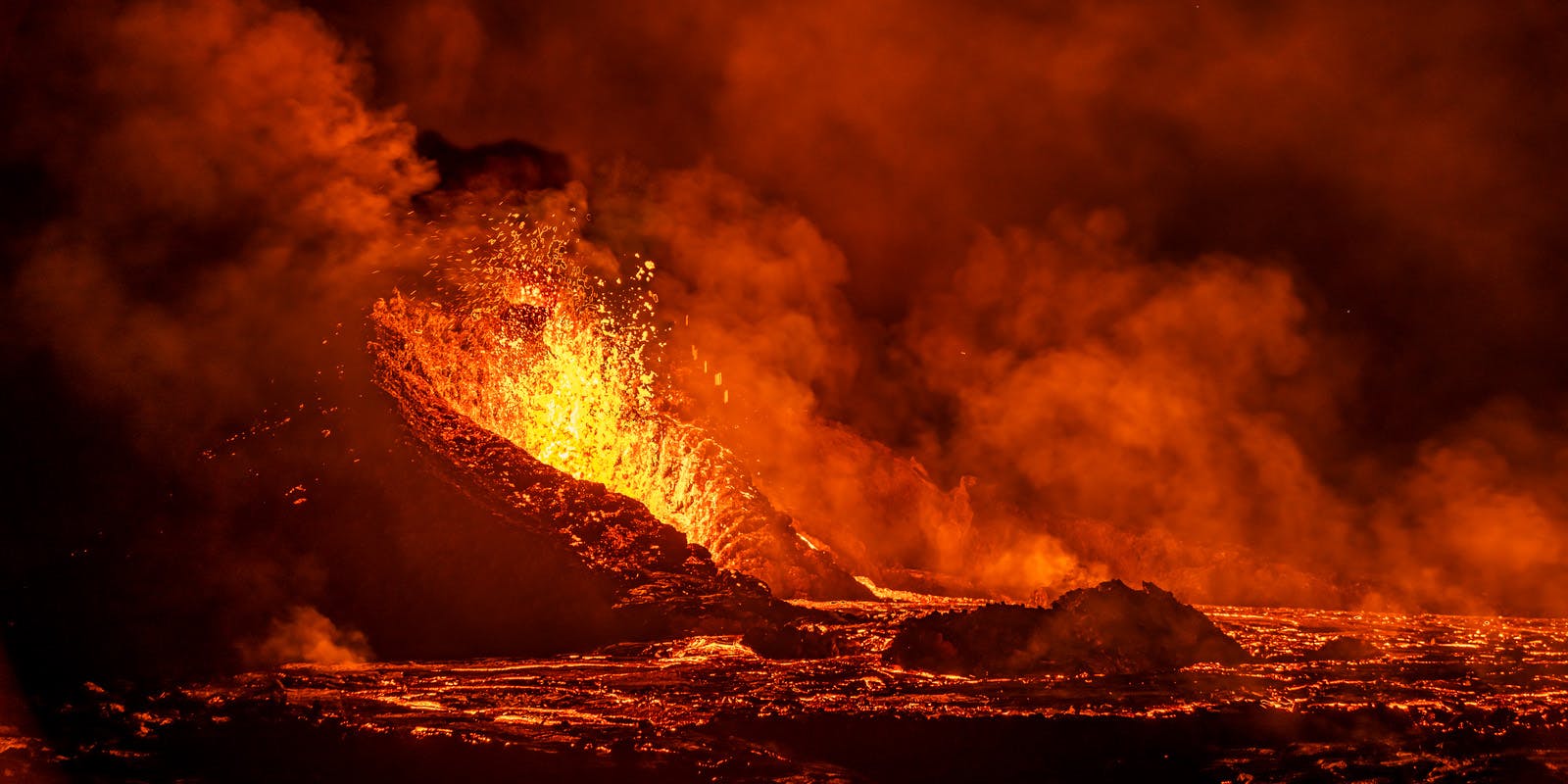
As you prepare for a hike to Fagradalsfjall volcano, it's crucial to treat it like any other long-distance hike in Iceland, even though the lava has stopped flowing. However, that doesn't mean you should underestimate it.
Make sure you have good hiking boots with sturdy ankle support. The uneven terrain can easily cause a twisted foot, and sturdy boots can be the difference between a sprained ankle and a successful hike.
Weather conditions can be drastically different at higher elevations, so monitor the forecast closely and consult local experts for accurate information about conditions on the trail.
It's wise to dress in layers and carry a day pack to add or subtract items of clothing as your temperature falls or rises. To avoid the risk of hypothermia, ensure you have enough warm layers to stay comfortable throughout your hike.
Additionally, pack enough food and water to sustain you for the journey, and bring a flashlight in case darkness falls before your descent.
Finally, remember to pack a camera to capture the stunning landscape and commemorate your achievement. While a smartphone is suitable for panoramic shots, consider bringing a DSLR with a telephoto lens if you're interested in capturing finer details and close-ups
By planning and packing carefully, you can set yourself up for a memorable and successful hike to the breathtaking Fagradalsfjall volcano.
Should You Hire a Guide?
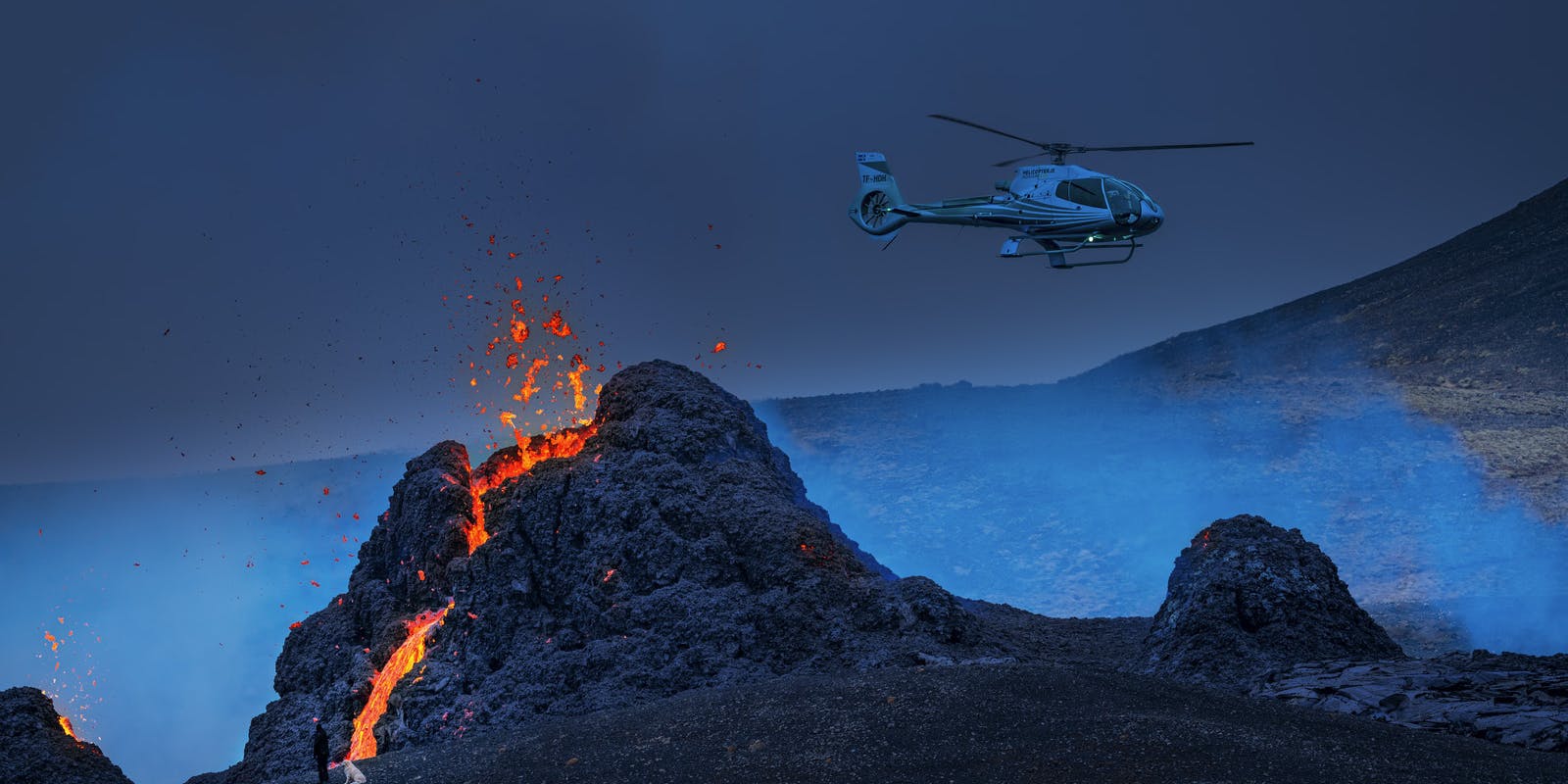
Guided hikes have several advantages. You're heading up to the volcano with someone who knows the terrain far better than you do, minimising the risk of getting lost or straying off the path.
Suppose you're not a very experienced hiker. In that case, the guide will give you confidence, encouraging you as you tackle the more difficult bits of the hike and generally reassuring you as you progress.
Before booking a guided tour, read reviews and choose a reputable company with positive feedback from fellow travellers.
How To Get to Fagradalsfjall Volcano and Where To Park
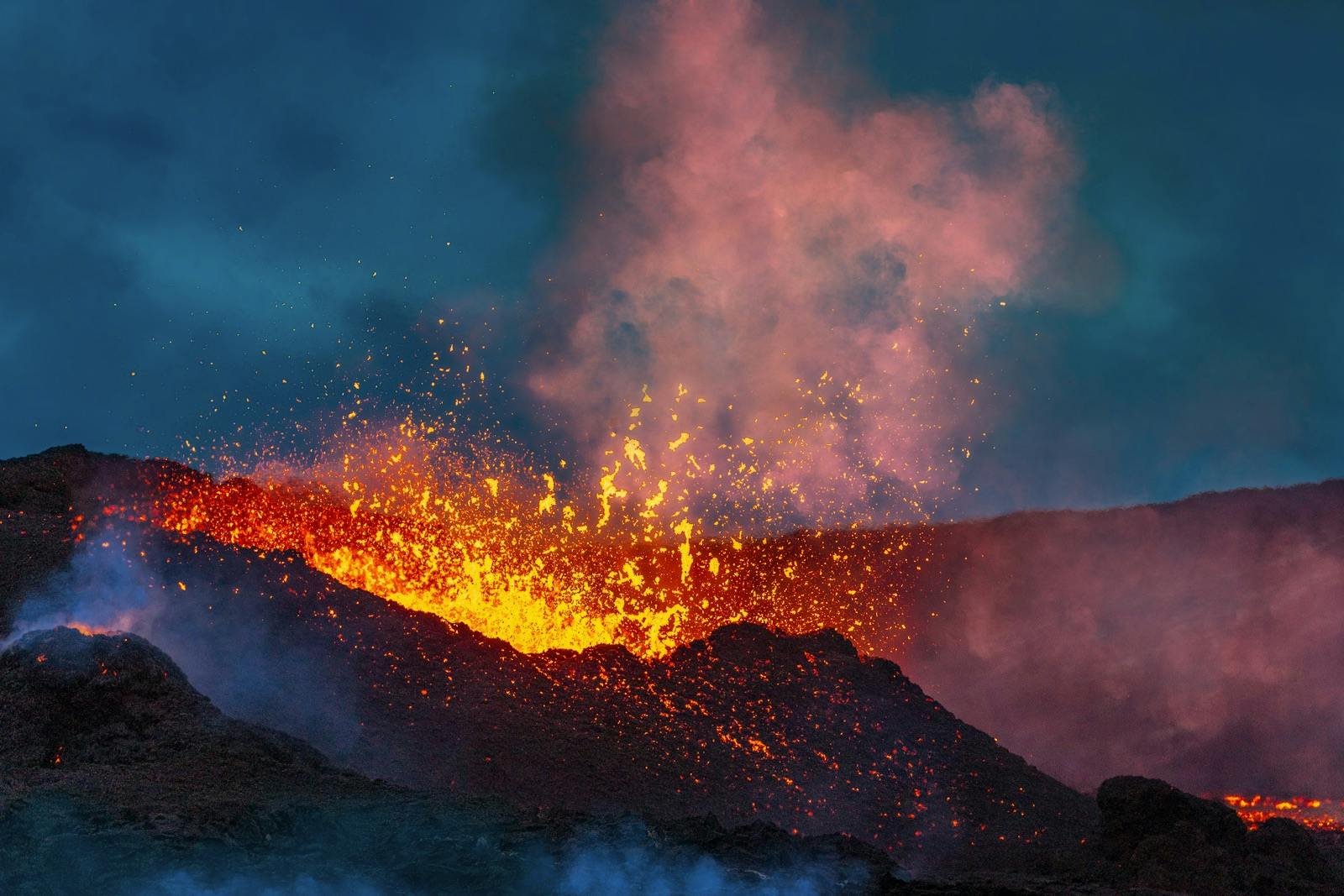
Fagradalsfjall is easy to reach from Reykjavik and Keflavik Airport. To reach the volcano, head to the southern side of the eruption site.
From Grindavik, drive approximately ten minutes east along Route 427 and look for the official car parks established during the early stages of the eruption.
Keep in mind that roadside parking is not permitted in Iceland, so be sure to use the designated parking areas.
Experience Fagradalsfjall in Reykjavik
For those unable to visit Fagradalsfjall volcano in person or who would like to complement their visit with additional information, Reykjavik's Perlan museum and observation deck offer a unique opportunity to learn about this fascinating geological feature.
Experience Fagradalsfjall in Reykjavik with the informative "Forces of Nature" exhibit which covers the science behind Iceland's volcanoes, including Fagradalsfjall, and provides an immersive experience to understand these captivating landforms better.
Popular tours
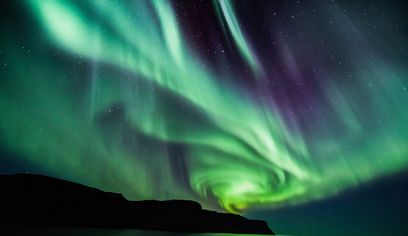
The #1 Northern Lights Tour in Iceland | FREE photos, Homemade Hot Chocolate & cinnamon buns

Reykjavík Northern Lights Cruise

Aurora Basecamp Night pass

Reykjavík Whales & Northern Lights

Northern Lights Tour from Reykjavik, With Photographs, Local Pastrys and Hot Chocolate

DT 310 Private Superjeep Northern Lights

NORTHERN LIGHTS AND STARGAZING (Guided in 10 languages)

GOLDEN CIRCLE AND NORTHERN LIGHTS (Guided in 10 languages)

Aurora Viking - The Private Tour - Northern Lights Tour

Northern Lights w/Aurora Viking - free pro photos - Free Retry – minibus
